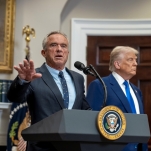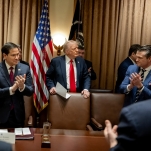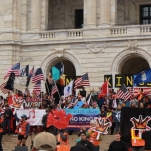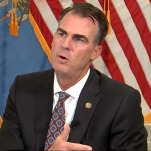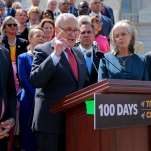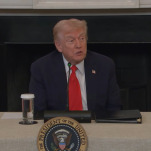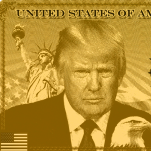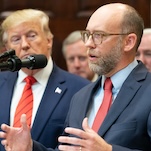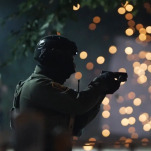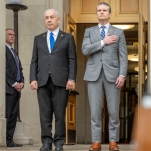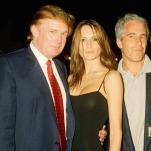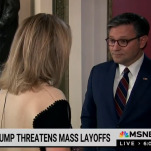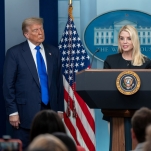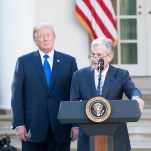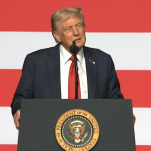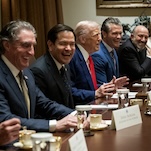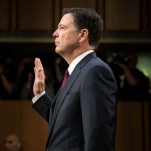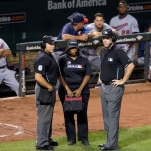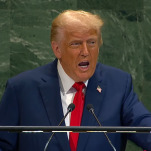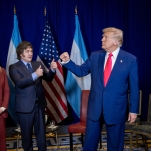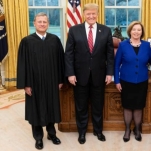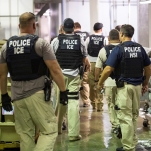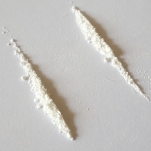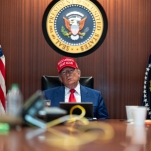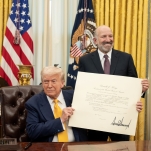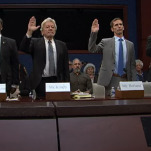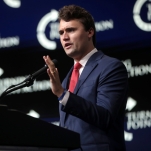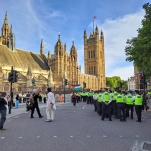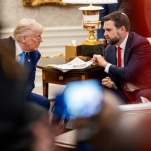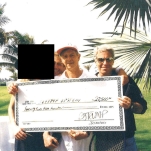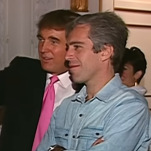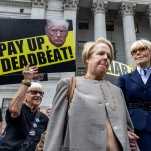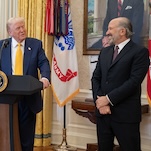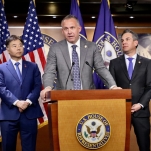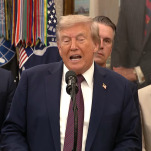Predator-in-Chief: The Docket of Trump’s Crimes, and America’s Burial of the Evidence
Illustration by Donny Evans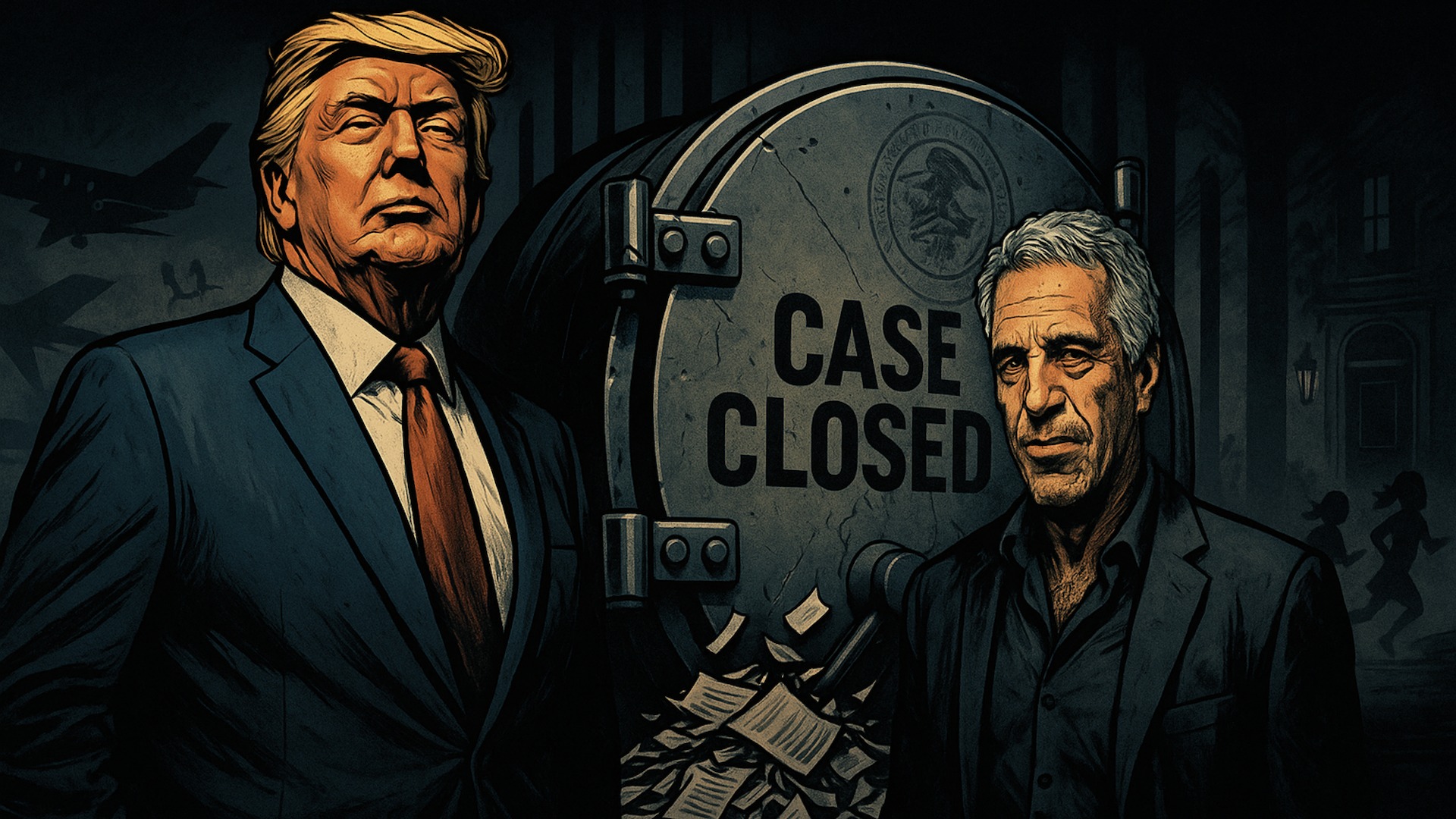
This originally ran in two parts on the author’s Substack, on July 9 and July 14.
The Ledger and the Lie
One must admire the efficiency of certain American institutions. It took six years, two presidencies, one federal conviction, and a flotilla of corpses before the Department of Justice and the Federal Bureau of Investigation reached their final determination: Jeffrey Epstein committed suicide, had no client list, and left behind no further suspects worth pursuing. Case closed. Justice lies on the autopsy table, drained, perfumed, and zipped into the body bag of official memory. With the July 2025 joint memo, the DOJ and FBI issue their final rites—“no further disclosure would be appropriate or warranted”—and entomb the record beside the man.
Jeffrey Epstein—an international trafficker of girls and procurer of flesh for the famous—was, we are told, a statistical anomaly. His network of wealth, surveillance, and organized rape existed in a vacuum. No clients worth questioning, no buyers worth unmasking, no accomplices worth inconveniencing—just one well-placed cadaver and the pornographic efficiency of a system that devours the girls and anoints the men who paid for them. Only the saintly prosecution of Ghislaine Maxwell (who, to remind readers, was convicted of sex trafficking to no one) remains on the record. And now, the FBI has scrubbed the ledger. The flight logs have faded, the vaults are bare, and the temple doors are bolted shut. But somewhere beneath the Department of Justice, there is a circle of hell with better records and worse company.
But the dead have a way of haunting the living — in particular Donald J. Trump—Epstein’s fellow host, financier, and confidant. In a 2002 profile for New York Magazine, Trump called Epstein a “terrific guy” and remarked, “He’s a lot of fun to be with. It is even said that he likes beautiful women as much as I do, and many of them are on the younger side.” We have, on public record, footage of Trump and Epstein at Mar-a-Lago in 1992, nodding and laughing as cheerleaders grind before them. The gesture spoke not of mere acquaintance but of appetite—two men at ease in their element, enjoying the shared spoils of power. No fleeting brush in the halls of Davos; this was comfort, complicity, camaraderie.
In 2016, amid the whirr of another Trump campaign, a lawsuit was filed by a woman under the pseudonym “Jane Doe.” She alleged that Trump had raped her at age 13 at Epstein’s Manhattan townhouse in 1994, during one of the now-documented “model parties.” The details of the lawsuit, later filed under her name—Katie Johnson—are appalling even by the feral standards of Manhattan’s dungeon elite. “I loudly pleaded with Defendant Trump to stop, but he did not,” Ms. Johnson wrote in a formal declaration accompanying her recent suits. “Defendant Trump responded to my pleas by violently striking me in the face with his open hand and screaming that he would do whatever he wanted. … Immediately following this rape, Defendant Trump threatened me that, were I ever to reveal any of the details of Defendant Trump’s sexual and physical abuse of me, my family and I would be physically harmed if not killed.” The case was dropped days before the election, citing threats to her life. The press—our heroic pillar of truth—retreated with astonishing speed.
But the specter returned in the form of a woman who would not be silenced. In 2019, longtime columnist E. Jean Carroll accused Donald Trump of raping her in the dressing room of Bergdorf Goodman in the mid-1990s. Trump responded with the reflexive venom of a man long inoculated against consequence—calling her a liar, a political operative, and, most famously, “not my type”. One might pause to ask which part of the accusation he found less plausible: rape or taste. The trial began in April 2023 in the Southern District of New York. By May 9, after less than three hours of deliberation, a jury of six men and three women unanimously found Trump liable for sexual abuse and defamation, awarding Carroll $5 million in damages. In his deposition, he confirmed what the tape had long foretold: “Historically, that’s true”.
The verdict marked a first in American jurisprudence: a president, past or present, legally branded a sexual predator. And it did not end there. In January 2024, a second jury awarded Carroll $83.3 million, after Trump repeated his slanders from the podium and the internet with the feral entitlement of a man who still believed no one could touch him. The judge dismissed Trump’s countersuit and ruled that Carroll’s accusation of “rape” was “substantially true”. When Trump appealed the original verdict, it was upheld on December 30, 2024—cementing the record like a tombstone. And still, he walks free—now president once more—dragging a jury’s unanimous verdict behind him like toilet paper stuck to the heel of his golf shoe.
-

-

-

-

-

-

-

-

-

-

-

-

-

-

-

-

-

-

-

-

-

-

-

-

-

-

-

-

-

-

-

-

-

-

-

-

-

-

-

-

-

-

-

-

-

-

-

-

-

-

-

-

-

-

-

-

-

-

-

-

-

-

-

-

-

-

-

-

-

-

-

-

-

-

-

-

-

-

-

-

-

-

-

-

-

-

-

-

-

-

-

-

-

-

-

-

-

-

-

-

-

-

-

-

-

-

-

-




